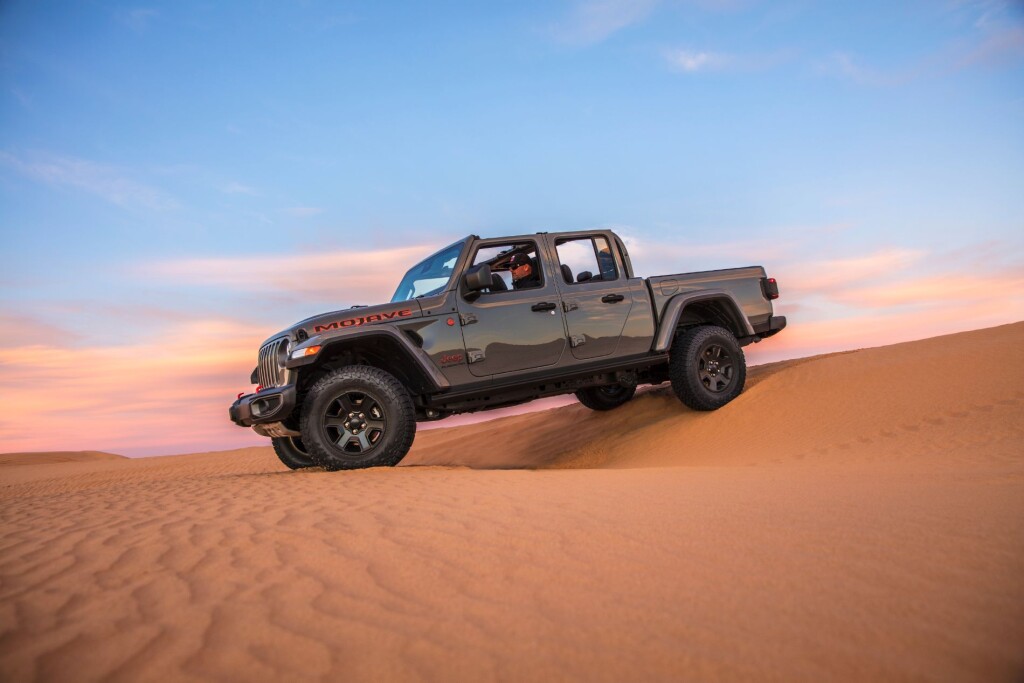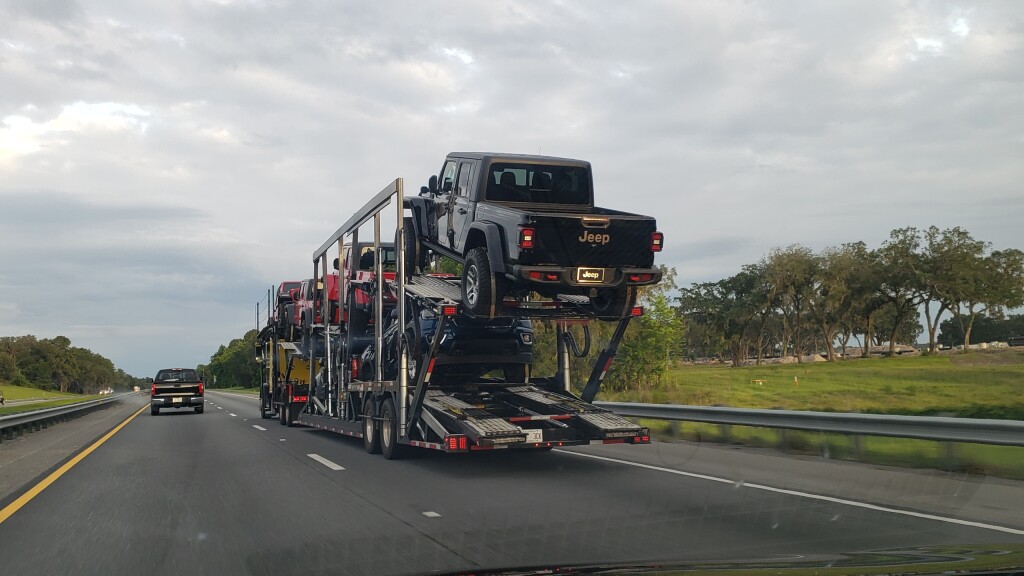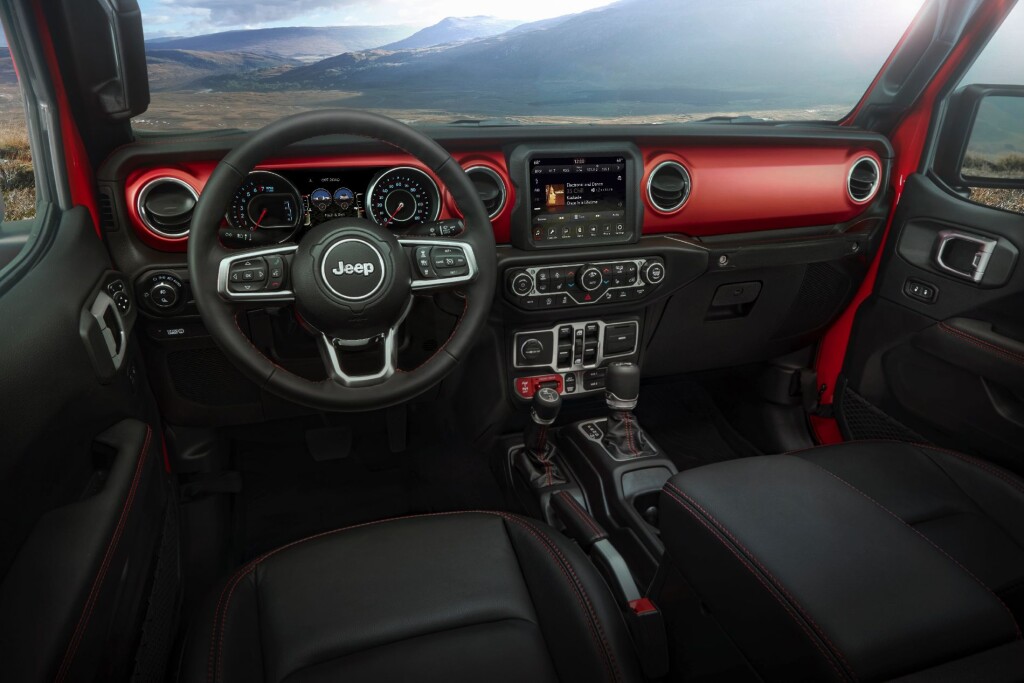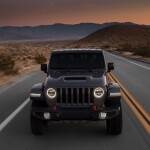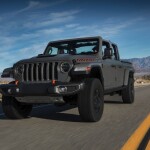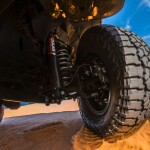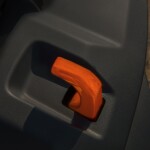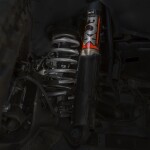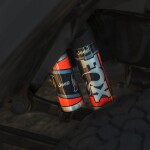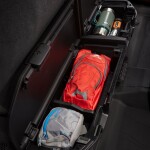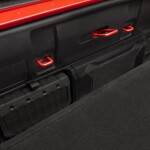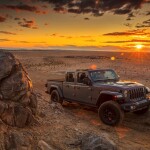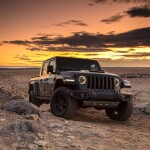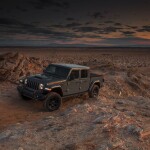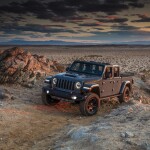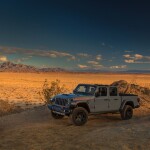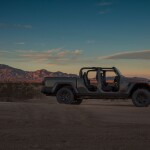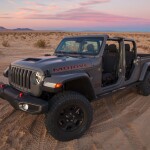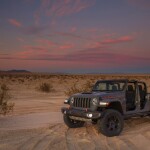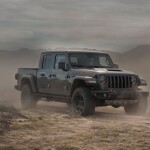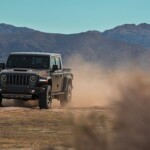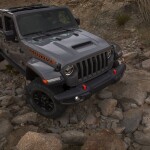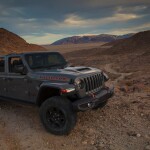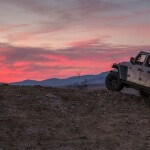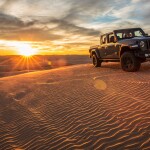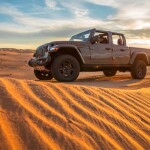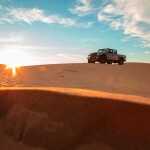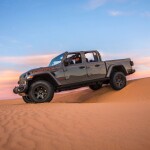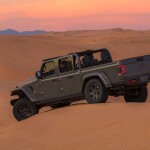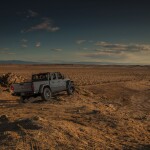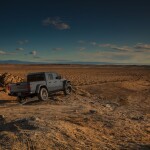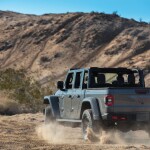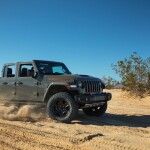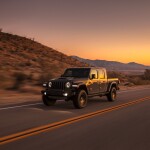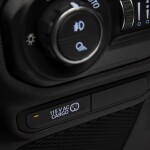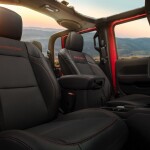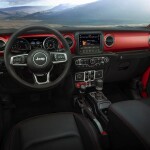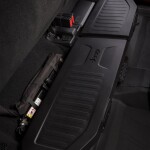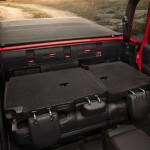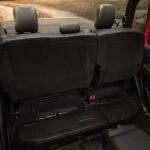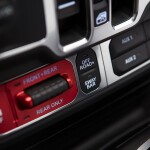I love all things Jeep. Well maybe not so much the Compass or Renegade but give me a Cherokee or especially a Wrangler and I’m all in any day of the week, or the weekend. Especially the weekend.
Perhaps it’s the off-road ruggedness, the ability to go where others can’t, the rough around the edges look, or a “My dad can beat up your dad, at least off-road” mentality.
So then, I’ve always liked the Jeep and that’s why I knew I’d like a Jeep that’s also a pickup truck.
Jeep has had such a thing. The first was in 1947, the last, the Comanche, in 1992. The Comanche had Selec-Trac® or Command-Trac four-wheel drive in its later years which made it even better.
But for the last 28 years if you wanted an off-road capable Jeep with a truck bed, at least new, you were out of luck.
But now, Jeep has such a thing again.
Behold 2020, and Jeep has given us the Gladiator (yeah, I always want to yell the line from the movie too. In fact, sometimes when I place an order at Starbucks, I tell them my name is Spartacus just so I can yell, “I am Spartacus!” when they call me).
The first time I saw a Jeep Gladiator in person was last June while heading down the Florida Turnpike. What I assumed was the first shipment of Gladiators were on the back of a car hauler, and I was so geeked out I actually had to take a pic (in a safe manner of course).
I waited over a year to actually get behind the wheel of one.
So, was it worth the wait?
When it comes down to it, the Gladiator is a Wrangler with a truck bed attached. Think four-door Wrangler Unlimited with an extended wheelbase and a 5-foot cargo bed instead of the normal cargo area.
The Gladiator can be had in four trim levels — Sport, Sport S, Overland, Rubicon and Mojave with each trim adding levels of comfort, convenience, and off-road capability.
All trims come with a convertible folding soft top, removable doors and a fold-down front windshield. A Class II bumper hitch with a 4,500-pound tow capacity, anti-sway trailer control, and a combination four-and-seven-pin trailer plug is standard. And all come with a 5-foot cargo bed, a four-wheel-drive system and a 3.6-liter V6 engine that produces 285 horsepower and 260 lb-ft of torque. A six-speed manual transmission is standard, and an eight-speed automatic is optional.
The Sport trim sits atop 17-inch steel wheels, wrapped with all-season tires. There’s also crank windows, manual door locks and mirrors, a tilt-and-telescoping steering wheel, cruise control, an eight-speaker audio system, a 5-inch central display, a rearview camera, Bluetooth, and voice control ability.
The Sport S trim level adds alloy wheels, power windows, power door and tailgate locks, heated power mirrors, and an auto-dimming rearview mirror.
Both trims can add options and packages to increase towing and hauling capability including a Trailer Tow package and the more capable Max Tow package (includes 4.10 axle ratios).
The Sport S can have more options. The Technology Group package includes a 7-inch touchscreen, satellite radio, Apple CarPlay and Android Auto compatibility, and automatic climate control. Other options include the Cargo Group package, a rail-based cargo management system and a 115-volt power outlet in the bed, and the Safety Group and Advanced Safety Group packages that add several advanced driver safety aids.
The Overland model adds 18-inch alloy wheels, body-color wheel arches, side steps, and tinted rear side and rear windows, all mainly appearance add-ons. Additional standard features include automatic headlights, LED ambient footwell lighting, a leather-wrapped steering wheel, the 7-inch infotainment system (with additional USB ports for the rear passengers), and a 110-volt outlet in the center console.
The Rubicon trim adds beefier off-road capability with a different transfer case that gives a lower crawl ratio for better climbing and crawling, fenders with increased clearance to accommodate larger 33-inch all-terrain tires, locking front and rear differentials, an electronically disconnectable front stabilizer bar, Fox shock absorbers, and body-protecting rock rails and skid plates.
Finally, there’s the Mojave which was the tester I had for my week. It mirrors the Rubicon a bit but lacks the Rubicon’s locking front differential and disconnecting sway bar made for rock crawling. Instead there’s gearing focused on desert running. One of the Mojave’s advantages is the flexibility offered by its transfer case, which enables low-range gear use at higher speeds than the Rubicon. Jeep also reinforced the frame, developed unique Fox internal bypass shocks with hydraulic bumpers to cushion impacts, and lifts the Gladiator by 1 inch for added ground clearance and it has a wider stance. It is also the first Jeep to wear a Desert Rated badge a new designation from Jeep for its vehicles that meet certain criteria.
All the levels can option in a premium sound system with a nine-channel 552-watt amp and subwoofer, an auxiliary switch group that lets you wire up to four electrical devices to customizable switches inside the cabin, a spray-in bedliner, a semi-rigid roll-up tonneau cover, a black hardtop with removable roof panels, and a premium soft top made of a thicker material that offers more insulation than the standard top. Overland and Rubicon models can get their hardtops painted in body color.
You can also get a three-piece hardtop roof, a premium soft-top roof, a spray-in bedliner, a tonneau cover, LED headlights, a larger 8.4-inch infotainment display, leather seating surfaces, a premium Alpine sound system, and a detachable wireless (Bluetooth-based) speaker.
I live nowhere near the desert. Spent plenty of time in deserts, but Florida has none, so I wasn’t able to take the Mojave into anything resembling a desert. But I have little doubt that I the Gladiator would have no issue. And while some have said the Gladiator is a little squirrely on the highway, I had absolutely no issue on the Interstate making a 160-mile round trip with the Jeep cursing along at 80mph just fine. In fact, the 3.6-liter powerplant seems more than adequate and in fact is zippy through traffic. I suspect that if a I needed to tow something the Gladiator would do just fine (it’s rated up to 7,650 pounds of towing).
Just as I noticed that truckload of Gladiators last year, the Mojave attracted attention where I went. Of course, the “Punk’n” Metallic paint, basically orange, probably helped.
After my week with the Mojave I can easily say that the Mojave would be my choice. It’s fine for everyday driving, but should you want to tear off through the woods somewhere (or of course the desert), there is little doubt this Gladiator could meet the challenge.
So after 28 years Jeep again has a pickup truck in its lineup. And I can now say, it was well worth the wait.
2020 Jeep Gladiator Mojave 4X4
MSRP: 43,875
MSRP (as tested): $61,505
Engine: 3.6 Liter DOHC 24-valve V-6 285 hp @ 6400 rpm, 260 lb-ft torque @ 4400 rpm
Transmission (as tested): 8-speed automatic
Fuel Mileage (EPA): 17 city, 22 highway, 19 combined)
Fuel Mileage (mixed conditions): 24 mpg
Base Curb Weight: 4,974
Interior Dimensions (Inches)
Front head room 43
Rear head room 43
Front shoulder room 56
Rear shoulder room 56
Front hip room 54
Rear hip room 56
Front leg room 41.2
Rear leg room 38.3
Standard seating 5
Exterior Dimensions (Inches)
Length 218.0
Body width 73.8
Body height 76.1
Wheelbase 137.3
Ground clearance 11.6
Warranty
Basic: 3 Years/36,000 Miles
Drivetrain: 5 Years/60,000 Miles
Corrosion: 5 Years/Unlimited Miles
Roadside Assistance: 5 Years/60,000 Miles
